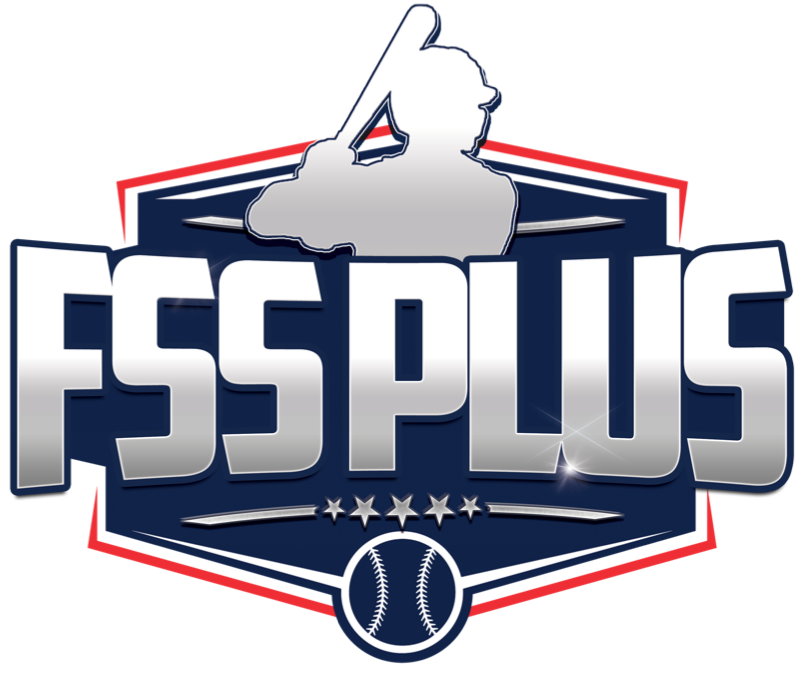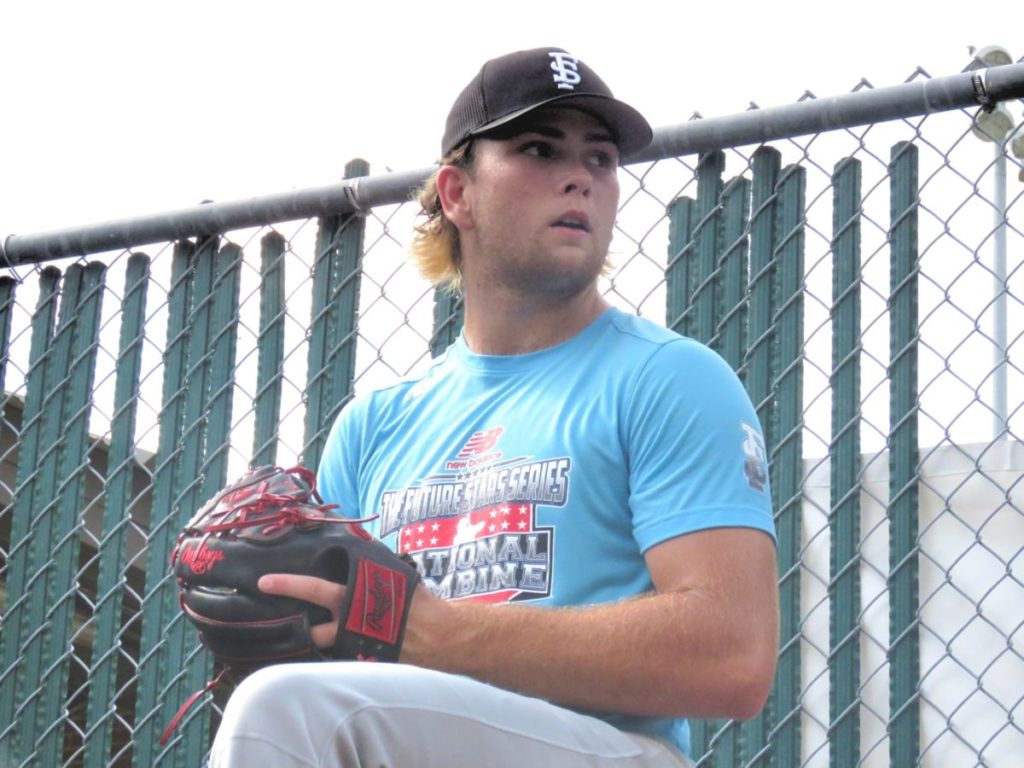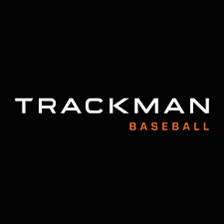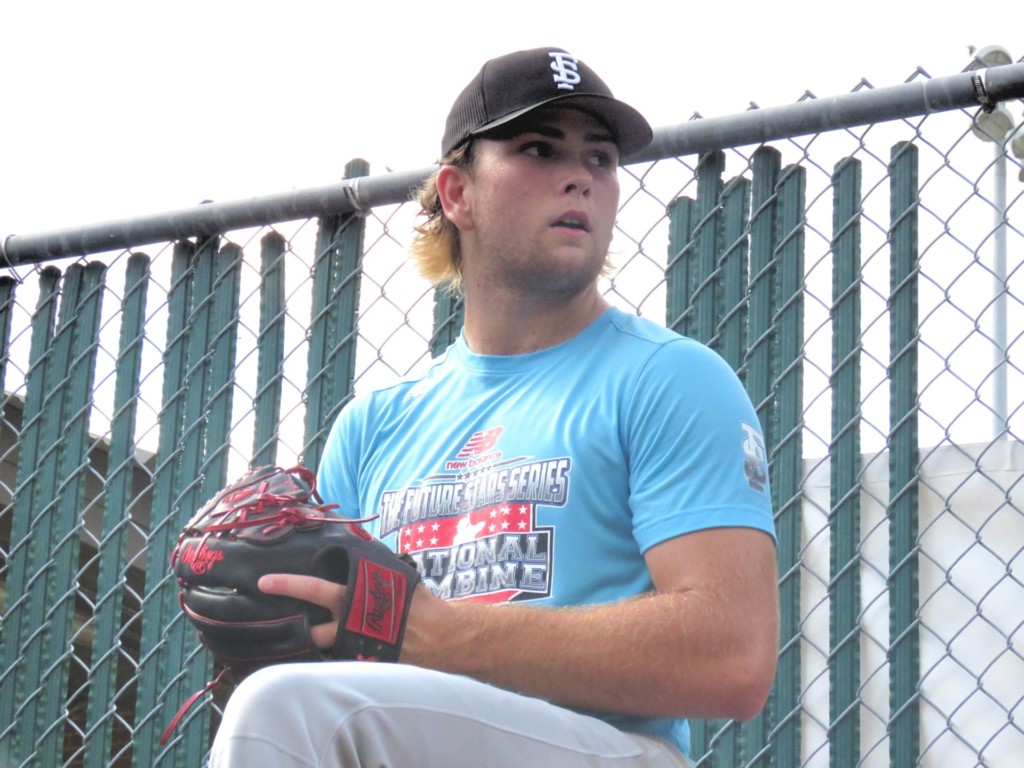
It did not take very long to find Griffin Stieg’s name when reading The Athletic’s look (written by Keith Law, also a Future Stars Series advisory board member) at the top MLB Draft prospects to come out of the Main Event at Citi Field this past September.
The report was quick and impressive: “Stieg was up to 95 from a low slot that made him a very tough look for right-handed batters, with some depth on the curveball despite the slot because he keeps his hand on top of the ball through release — much the way Chris Sale got to a plus slider after the White Sox drafted him and got him on top of the ball more.”
He allowed just two hits and struck out four batters over the course of his outing, cementing his name firmly to the dozens of big league scouts and execs on hand that he was a pitcher worth having on their radars when the Draft rolls around.
Stieg also took batting practice at the event.
Of course he did.
The Virginia Tech commit is a two-way player who is very, very capable with the bat, something he showed in grand fashion at the 2020 Future Stars Series Underclass Combine in Lake Charles, Louisiana.
Stieg climbed through the ranks quickly with the Future Stars Series, earning a National Combine invite in 2021 off of that Underclass performance, which he then turned into a trip into the Main Event. The work hasn’t stopped there, though.
“After the Main Event, I went to Jupiter that following week and then I took a little three-week break,” he said. “Ever since then, I’ve been in the weight room throwing and hitting pretty much this whole off-season, pretty much just trying to get more explosive.”
Stieg certainly looked plenty explosive at that Main Event, which he says was “an awesome experience” and also his first time in New York City, so he’d never even seen Citi Field before, no less been able to pitch there.
“We got the full package; locker rooms, snacks, bullpen usage, buses. It was just a great event, with some of the top players in the country there. Just overall, great event,” he said.
And to see his name in The Athletic afterwards?
“It definitely shows how much people, when they put in work, how much it shows,” he said. “It’s rewarding, but also humbling, and it makes you want to work even harder.
He was, however, really only seen in game action as a pitcher after seeing time as a two-way guy in both of his previous FSS events. It was simply the role that fit him best for that particular event, but Stieg very, very much so still sees himself as a two-way talent moving forward.
“I’m going to do both until someone tells me to stop doing one,” he said. “I love both, I work just as equally as hard on both. I love to do both; I’ve always hit and I’ve always been a pitcher, so it’s been fun. But, I’m going to continue to do it until someone says otherwise. They’re always questioning if I put more work in on one or the other, but that’s really the only question. There’s no trying to pull me some way. I think people are supportive about it, and I think people should try to do both for as long as they can.”
Truth be told, most scouts see Stieg as a pitcher moving forward — which isn’t to say that he can’t hit or shouldn’t continue to work as a hitter — which is not an assessment he’s unfamiliar with or upset about.
“I think that definitely skyrocketed this year, over this past summer I think people definitely saw me more as a pitcher,” he said. “But, that doesn’t stop me from hitting. I’m going to continue to work just as hard in that.”
It’s abundantly clear that, on both sides of the ball, Stieg is a student of the game, asking the kind of questions that some players years older than him likely aren’t focused on just yet. Between his own physical development as he matures and his mental prowess and eagerness to learn and adapt, it’s easy to see why he made such great gains on the mound from the first time we saw him to the Main Event and beyond.
“I definitely feel like I’ve learned so much about myself, so much about actually pitching,” he said.
“I would say, sophomore year, I didn’t really understand what pitching was. But, I went to a new facility and got on Trackman and started diving in a little bit into analytics and see my ball move, and I think that helped me learn a lot about myself. Then, knowing how to use my pitches and tunneling and all that type of stuff; when to throw the right pitches, how to set that up. Knowing my body, the facility (R&D in Virginia) has done a phenomenal job of trying to make me as efficient as possible. Learning about that has been cool, especially seeing how I’ve really only known how to ‘pitch’ since my junior year.”
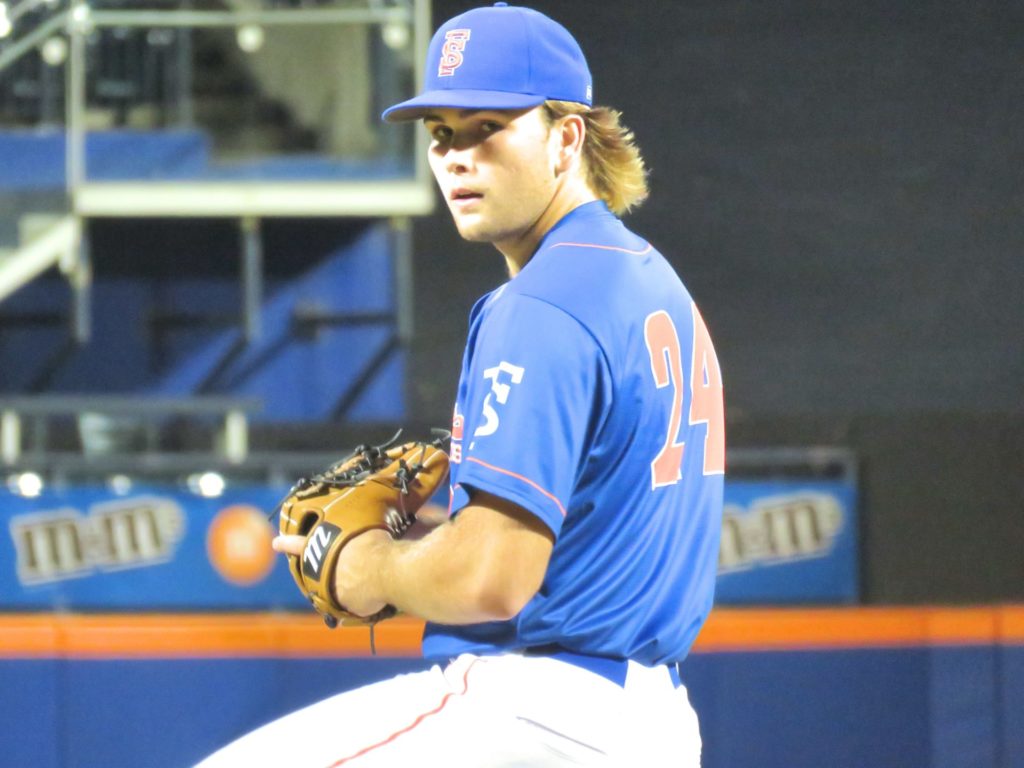
There are, especially in amateur baseball, but the game as a whole, too many “throwers” and not enough “pitchers.” An obsession over velocity can only take you so far if you don’t know what you’re doing with it.
Stieg is, clearly, a pitcher. It’s something he takes a lot of pride in.
“It’s been pretty important to me, and at R&D, they really emphasize that, that at these top events across the country, you can’t just go out there and throw hard,” he said. “Hitters are going to hit you if that’s your goal. So, you’ve got to find a way to try and beat them, so I think learning about yourself and your pitches gives you that one-step advantage. (Analytics) is about looking at movement, and it gives me instant feedback on my feel to pitch. If it was a good slider, a good changeup, a good fastball, there’s feedback right away. That helps a lot with pitch design and fiddling around with grips and stuff like that.”
Especially in travel ball, where Stieg isn’t always sure of who he’s facing, having that knowledge and confidence is important, just as it is in high school ball, where he’s able to better attack their weaknesses through his experiences in the workshop.
That’s something that works both ways, however, as he utilizes a lot of that same information when he’s at the plate as well.
“A lot of it was changing my swing path this offseason,” he said. “I was kind of caught up and tight, but I hit, pitch and lift all at the same facility, and the hitting guy there has done a great job. He’s very big into feel, and he got my routine down, so I’ve been doing that this whole offseason. I continue to adjust and tweak my swing, and it feels good right now.”
Stieg, a natural low three-quarter arm slot pitcher, says he looks at San Francisco Giants starter Logan Webb as someone he can model his game after on the mound — he mentioned their similar arm slots and pitch design with the sinker, slider and changeup — but isn’t really looking at anyone on the hitting side given the “feel” nature of what it’s been like on that side of the game for him.
Whatever’s next for Stieg, it’s evident that they’re getting a player ahead of his years in feel for the game, not to mention development.
But, that’s just it. What’s next?
The Hokies commit is as every bit on the MLB Draft radar as that Athletic article claimed him to be — for example, Prospects Live currently has him ranked at No. 146 on their 2022 list of all eligible prospects — and has the upcoming spring and summer to continue to climb up draft boards across the league.
“I definitely have two great options,” he said.
“Obviously, Virginia Tech. Dream school. It’s a great school; good academics, it’s in-state, the baseball facilities, the coaches, everything there is just top tier. And then also, it’s always been a dream to play professional baseball. Definitely two great options. Couldn’t go wrong with either. It’s pretty exciting, I’m looking forward to where the future takes us.”
Just 18 years old, it’s also a lot to have on his plate, especially with that potential decision still being so far away. As you’d expect, he’s handled it with incredible maturity.
“It’s definitely a big part of my life, and it’s a reoccurring conversation with my family,” he said. “There’s so many things that can go into this…there’s so many things to talk about. With such two good opportunities, it’s going to be an even harder decision.”
But, with what he’s learned across the amateur baseball landscape so far, especially at some of the Future Stars Series jewel events over the past two seasons, he feels prepared to take whatever path he ends up going in stride.
“It prepares you in a way where you’re playing against the best competition,” he said. “So, when you go to these events and you put yourself around people who want to do the same things as you and play at the next level — college or professional — I mean, it puts you in a place where you have to dig deeper and you have to go to a different place mentally, physically, all that type of stuff. It pushes you, it makes you want to get better. The feedback from what Future Stars gives you, it’s just super beneficial. They’re great for you.”
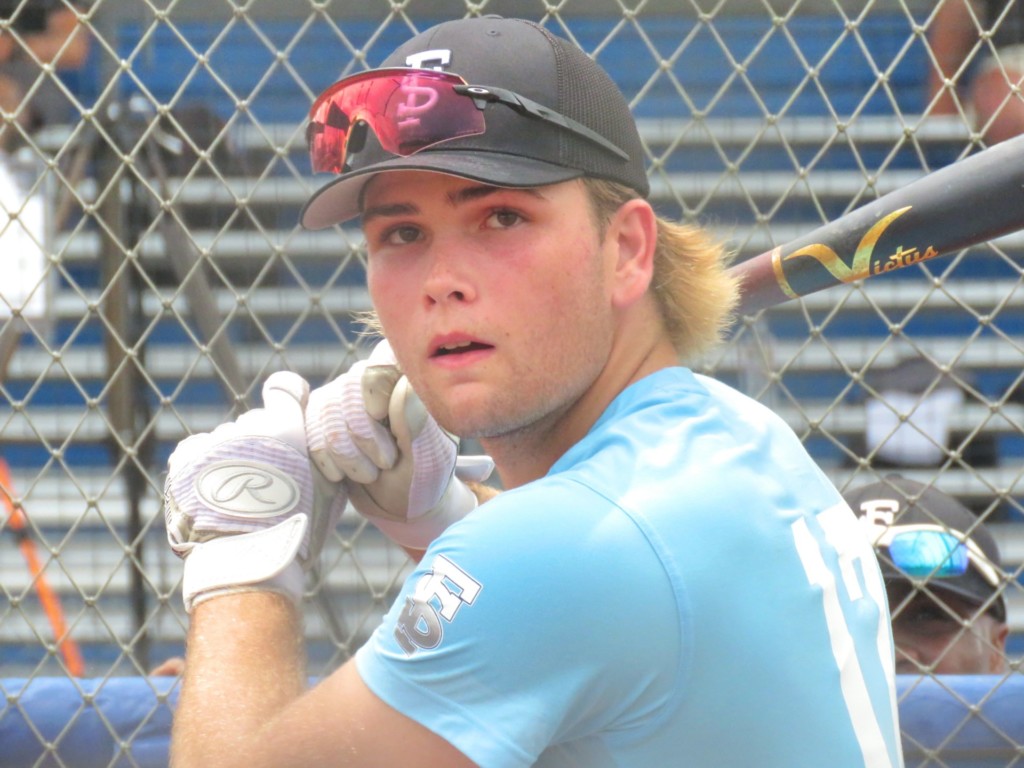
- ASHMORE: 5 Underclass Elite hitting standouts - October 22, 2025
- ASHMORE: 5 Main Event hitting standouts - October 15, 2025
- INVITE: Chase Austin, Underclass Elite - October 1, 2025
